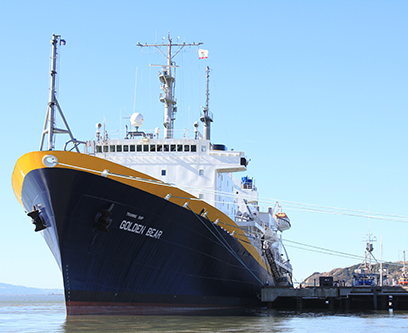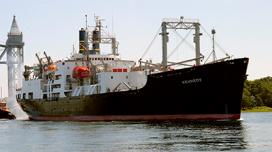Making the Case for New Maritime Training Vessels
The U.S. Maritime Administration (MARAD) maintains a fleet of U.S. Government-owned vessels to train merchant marine officer candidates and support other federal agencies in humanitarian assistance and disaster relief efforts. The current fleet ranges considerably in age, size, mission capability, and material condition. As more and more cadets enroll for training, MARAD will need to increase capacity and modernize the capabilities of its training fleet.
The two training ships with the greatest student capacity—the TS Empire State, with capacity for 666 cadets, and the TS Kennedy, with capacity for 600 cadets—were built roughly 50 years ago.
“Should the TS Empire State or the TS Kennedy come out of service, it would have a devastating ripple effect across all five state maritime academy training programs,” said Eric Wallischeck, a principal technical advisor for transportation logistics and security at Volpe.

Meet the fleet: MARAD’s training ship fleet includes the TS Golden Bear, California; TS Kennedy, Massachusetts; TS State of Maine, Maine; TS Empire State, New York (pictured above); and TS General Rudder, Texas.
In January 2015, MARAD asked Volpe to help produce a business case analysis report capturing the inventory of existing vessel designs that meet basic training requirements. This report included an analysis of various recapitalization options to extend the fleet’s overall service life to 50 years, based on quantitative and qualitative information.
Volpe’s maritime experts assembled a highly capable team, bringing together expertise in marine engineering, economic analysis, mariner education and training, and maritime policy. Volpe and MARAD worked closely to develop and refine recapitalization options, scenarios, and strategies.
Based on Volpe’s business case, MARAD concluded that three ships will no longer be operational if no action is taken by 2025.
 “Without the state maritime academy training ships, there would be a long-term negative impact on national security, reducing the number of credentialed mariners available to operate U.S. vessels during war, national emergencies, and for domestic and international commerce,” said Wallischeck.
“Without the state maritime academy training ships, there would be a long-term negative impact on national security, reducing the number of credentialed mariners available to operate U.S. vessels during war, national emergencies, and for domestic and international commerce,” said Wallischeck.
Based on Volpe’s analysis, MARAD began exploring the costs and benefits of a long-term recapitalization program. Constructing five new vessels would have the lowest total estimated lifecycle costs, according to the analysis, and would provide vessels ready for a range of missions for 50 years.
MARAD officials have used the study to make their case for recapitalization within the Office of the Secretary of Transportation and the Office of Management and Budget in the preparation of President Obama’s fiscal year 2017 budget.

